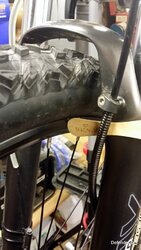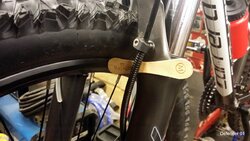DEFENDER01
Über Member
- Location
- Essex
Having never done wheel truing before i was surprised that when you take your time and only do small adjustments at a time its not such a black mysterious art that some people make it out to be.
I found the trick is to loosen the opposite spokes to the ones you are going to tighten.
And this is the bit i liked which involved having to have a nice Magnum to obtain the lolly stick.
Good tip is not to keep the lolly stick when the job is done so next time you need to have another.
I found the trick is to loosen the opposite spokes to the ones you are going to tighten.
And this is the bit i liked which involved having to have a nice Magnum to obtain the lolly stick.
Good tip is not to keep the lolly stick when the job is done so next time you need to have another.






